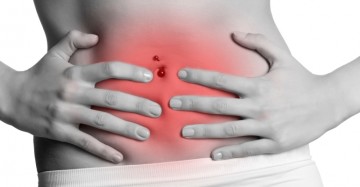By Dr. Steve Wong on December 23, 2014
Thanks again to all of our readers, authors, editors and support team. On behalf of all of us at This Changed My Practice, I’d like to wish everyone a safe, happy and healthy holiday season! See you in 2015.
By Dr. Greg Rosenfeld on December 10, 2014
Fecal Calprotectin is a simple laboratory investigation performed on a first-morning stool sample which is widely available in BC.
By Dr. Chris Stewart-Patterson on November 25, 2014
A significant number on patients on daily opioid medications may not be safe to drive a motor vehicle and that particular clinical issue can be problematic to assess within a primary care clinic visit.
By Dr. Anna Tinker on November 12, 2014
I refer all women diagnosed with a HGSC of the ovary, fallopian tube or the peritoneum, irrespective of age, to the Hereditary Cancer Program for genetic counseling and for BRCA mutation testing.
By Glynnis Tidball, MSc (Aud, SLP), RAUD on October 28, 2014
Tinnitus – the perception of sound generated in the head – is a common complaint, with about 10-15% of the general population reporting tinnitus at least once a week.
By Dr. Mustafa Toma and Dr. Christopher Cheung on October 15, 2014
In patients presenting with acute decompensated heart failure and previously on oral loop diuretics at home, there is no difference between low-dose and high-dose furosemide, or bolus and continuous infusions, on the patient’s global assessment of symptoms and changes in serum creatinine at 72 hours.
By Dr. Alisa Lipson on September 30, 2014
Autism rare? Not so now. The current prevalence is a staggering 1 in 68, about four times as common as type 1 diabetes, with a male to female ratio of 5:1.
By Dr. Nadia Zalunardo on September 15, 2014
The most common cause of death among individuals with chronic kidney disease is cardiovascular disease. For most people with CKD, the risk of cardiovascular death exceeds the risk of developing end stage kidney disease.
By Dr. Keyvan Hadad on September 2, 2014
Congenital heart defects account for more newborn deaths than any other type of congenital defect, representing up to 40% of all deaths from congenital defects and 3–7·5% of all infant deaths.
By Dr. Stan Lubin on August 2, 2014
In the 1970’s if you had a suggestive history, physical exam, and no osteoarthritis you would probably have a complete meniscectomy. Often the knee pain persisted postoperatively. Then complete meniscectomy was shown to be associated with a significantly increased risk of osteoarthritis.
By Dr. Dean Elbe on July 1, 2014
DrugCocktails.ca website now covers almost 200 prescription and over-the-counter medications, and 10 substance categories. It has been developed as a resource for youth and staff within Children’s & Women’s Health Centre of British Columbia Branch (C&W) for Provincial Health Services Authority and its branch agencies.
By Dr. Pam Squire on June 9, 2014
Many people mistake the pain of withdrawal as their usual pain and assume their pain improved because the opioid was relieving their pain, when it was more often just relieving the pain associated with the induced withdrawal.
By Dr. Rosemary Basson on May 21, 2014
Aside from testosterone replacement to younger men with proven testosterone deficiency, evidence of benefit from hormonal or pharmacological therapy to increase sexual desire is minimal.
By Dr. Tara Sedlak on April 14, 2014
Women with myocardial infarction (MI) have a two fold higher rate of no obstructive coronary artery disease (CAD), defined as <50% stenosis in any epicardial coronary artery on angiogram, than men. Despite this, outcomes including death during hospitalization following an MI are higher among women (particularly women <55 years) as compared to men.
By Francoise Mathieu on March 26, 2014
When you started your medical training, were you told that you could potentially be permanently psychologically damaged by your job? Did your medical school instructors provide you with a toolkit to prevent compassion fatigue and vicarious trauma?
By Dr. Natasha Press on March 5, 2014
The most recent AHA guidelines (2007) have limited antibiotic prophylaxis to those patients at highest-risk for developing endocarditis and who are undergoing high-risk invasive procedures.
By Dr. Kara Jansen on February 18, 2014
In 2009 I spent a year studying Breastfeeding Medicine in Melbourne, Australia. I now understood more about the physiology of lactation and the role we think domperidone plays in supporting lactation.
By Dr. David Sheps on February 4, 2014
When a patient with a displaced mid-shaft clavicle fracture presents to you, is there a need to consider a referral for surgical management, or can you treat these patients non-operatively?
By Drs. Kam Shojania and Neda Amiri on January 21, 2014
The Canadian Rheumatology Association (CRA), American College of Rheumatology (ACR), and European League against Rheumatism (EULAR)7 have put forward revised guidelines in the recent years in their treatment approaches for rheumatoid arthritis. More than ever there is an emphasis on early diagnosis and appropriate treatment with disease-modifying anti-rheumatic drugs (DMARDs).
By Alison Hoens and Dr. Alex Scott on January 7, 2014
Tendinopathy of the lateral epicondyle can be a difficult problem to resolve. The Lateral Epicondyle Tendinopathy Toolkit is an excellent resource for physicians looking to quickly advise patients on interventions to manage both acute and chronic tennis elbow.





















Recent Comments